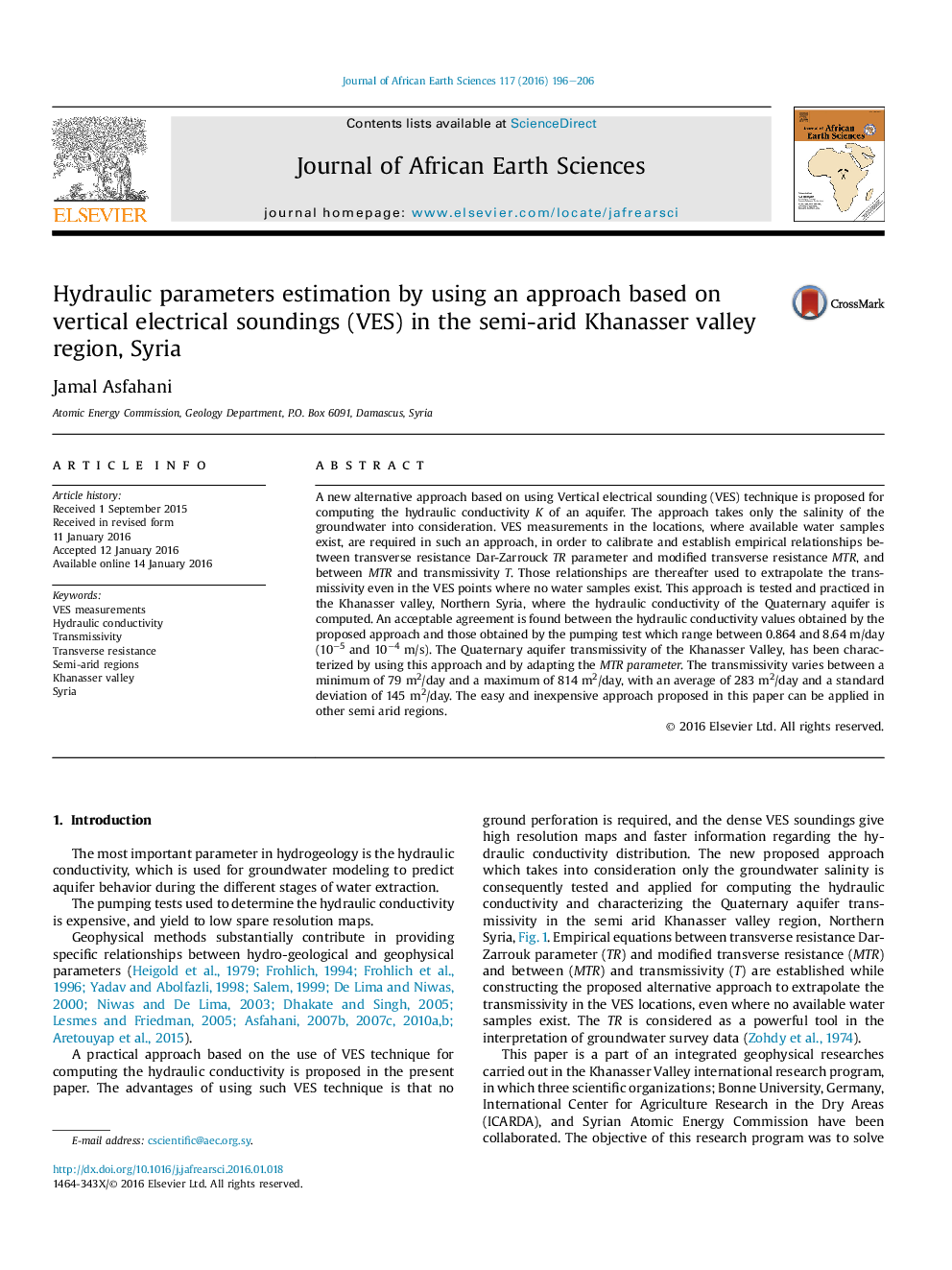| Article ID | Journal | Published Year | Pages | File Type |
|---|---|---|---|---|
| 4728325 | Journal of African Earth Sciences | 2016 | 11 Pages |
Abstract
A new alternative approach based on using Vertical electrical sounding (VES) technique is proposed for computing the hydraulic conductivity K of an aquifer. The approach takes only the salinity of the groundwater into consideration. VES measurements in the locations, where available water samples exist, are required in such an approach, in order to calibrate and establish empirical relationships between transverse resistance Dar-Zarrouck TR parameter and modified transverse resistance MTR, and between MTR and transmissivity T. Those relationships are thereafter used to extrapolate the transmissivity even in the VES points where no water samples exist. This approach is tested and practiced in the Khanasser valley, Northern Syria, where the hydraulic conductivity of the Quaternary aquifer is computed. An acceptable agreement is found between the hydraulic conductivity values obtained by the proposed approach and those obtained by the pumping test which range between 0.864 and 8.64Â m/day (10â5 and 10â4Â m/s). The Quaternary aquifer transmissivity of the Khanasser Valley, has been characterized by using this approach and by adapting the MTR parameter. The transmissivity varies between a minimum of 79Â m2/day and a maximum of 814Â m2/day, with an average of 283Â m2/day and a standard deviation of 145Â m2/day. The easy and inexpensive approach proposed in this paper can be applied in other semi arid regions.
Related Topics
Physical Sciences and Engineering
Earth and Planetary Sciences
Geology
Authors
Jamal Asfahani,
